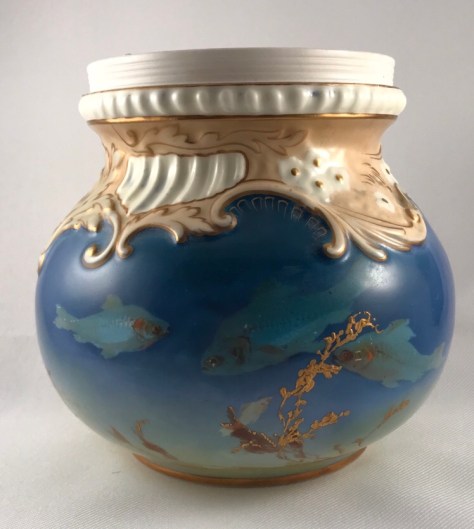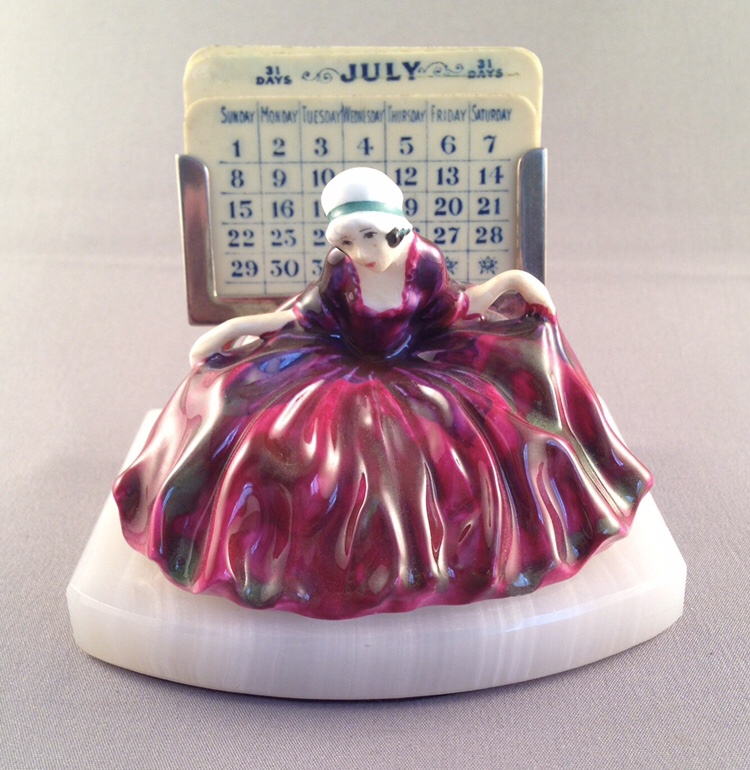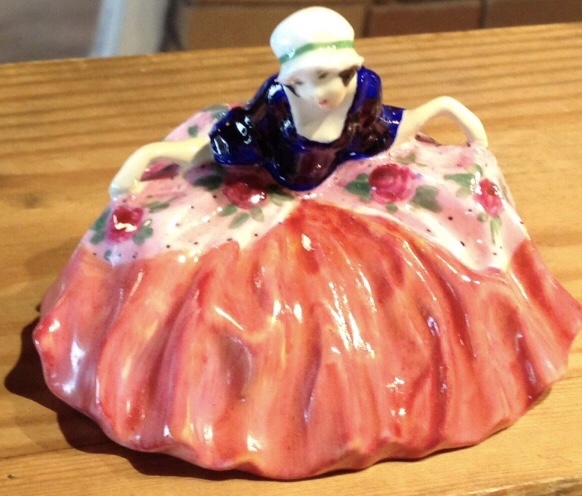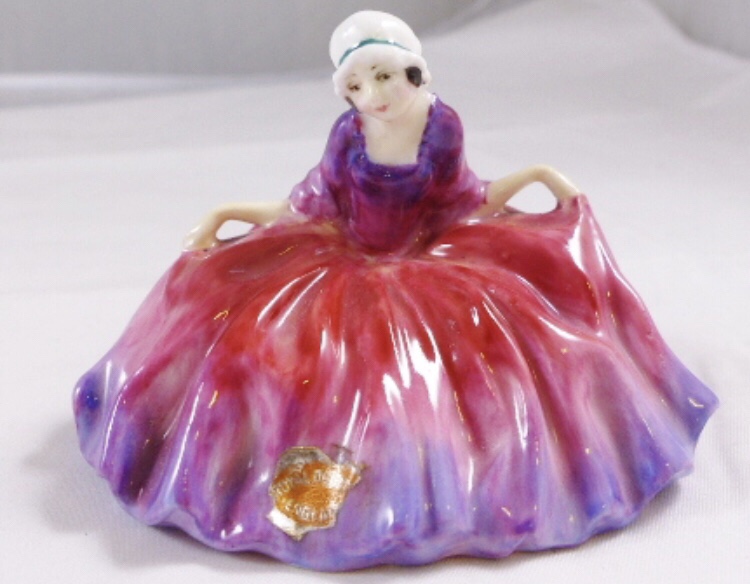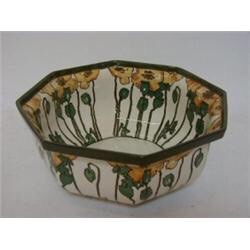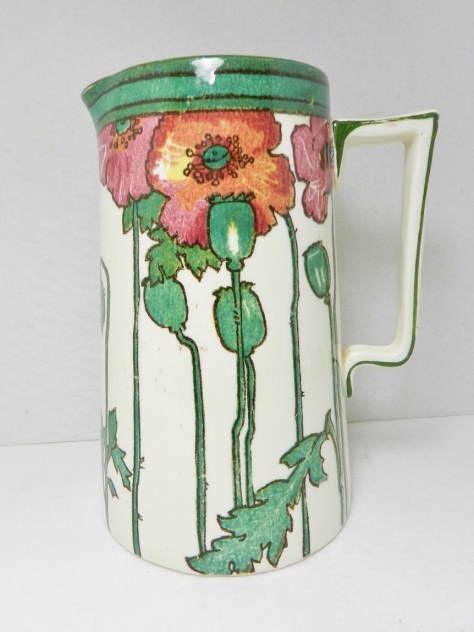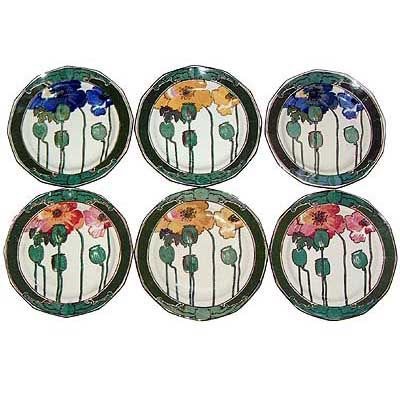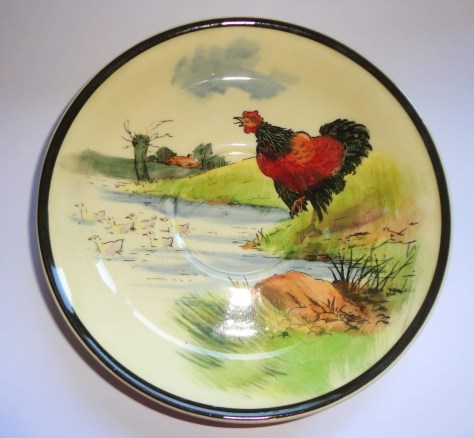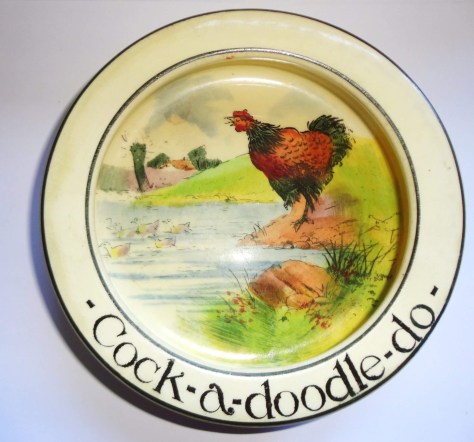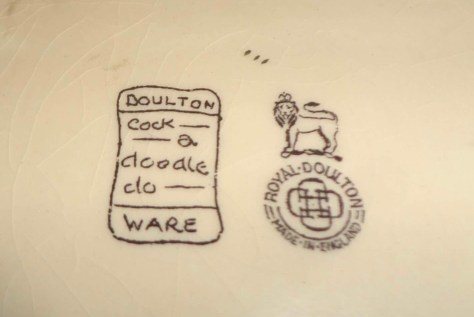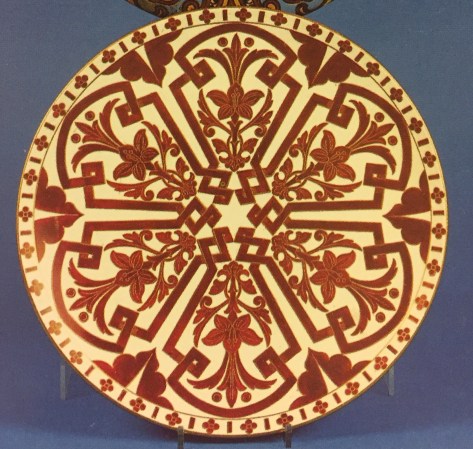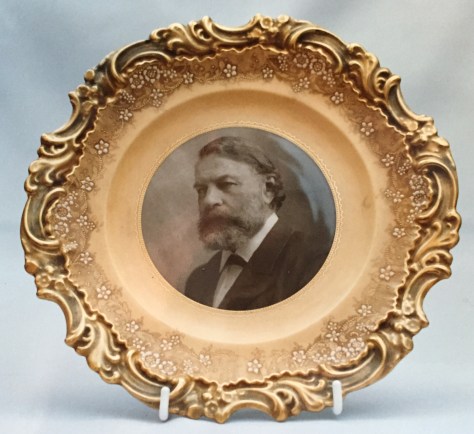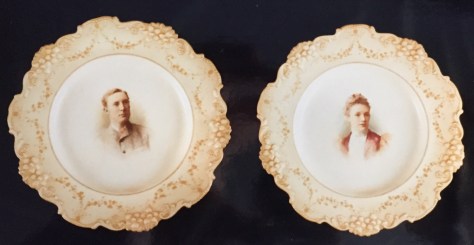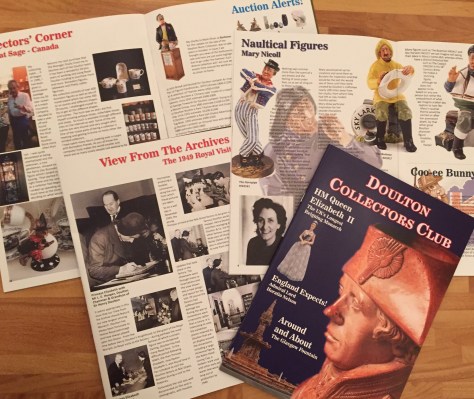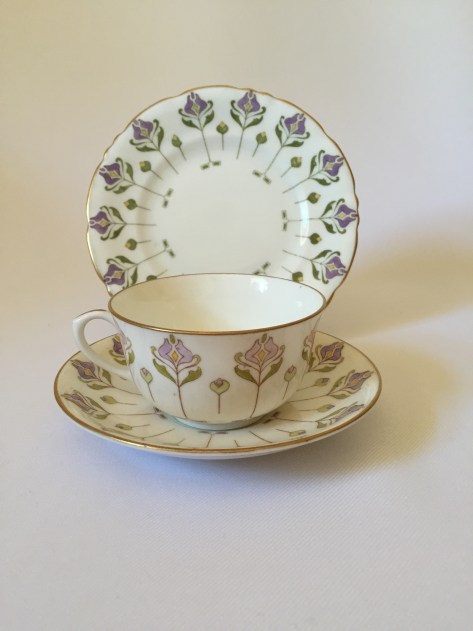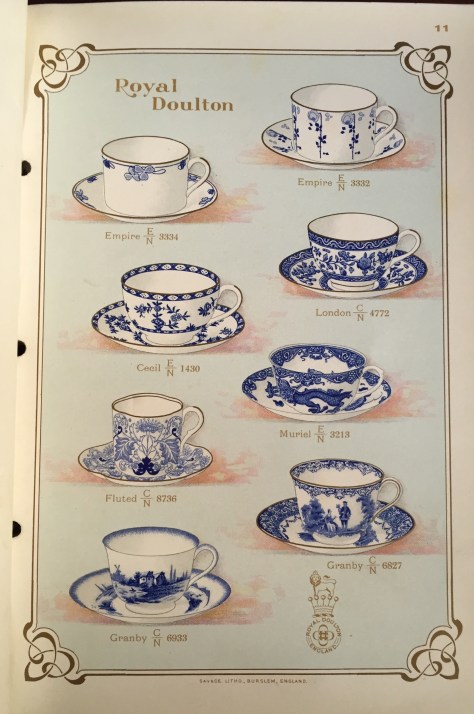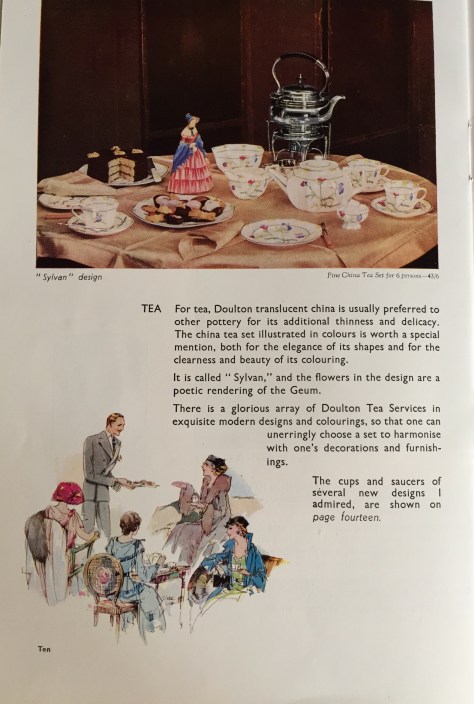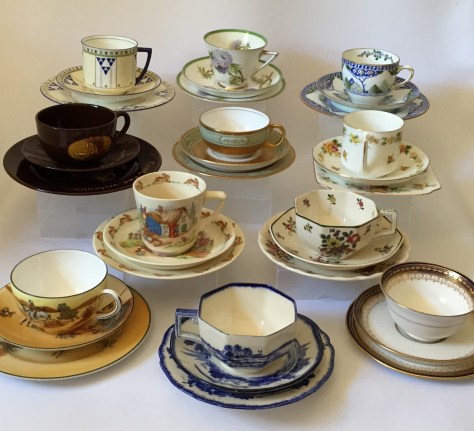Produced briefly around the turn of the 20C, Lactolian wares were proof if any were needed that the Doulton band of artists could equal the work by the great Sèvres and Minton works and is in fact Doulton’s own version of the two aforementioned firms exquisite pâte-sur-pâte ware.
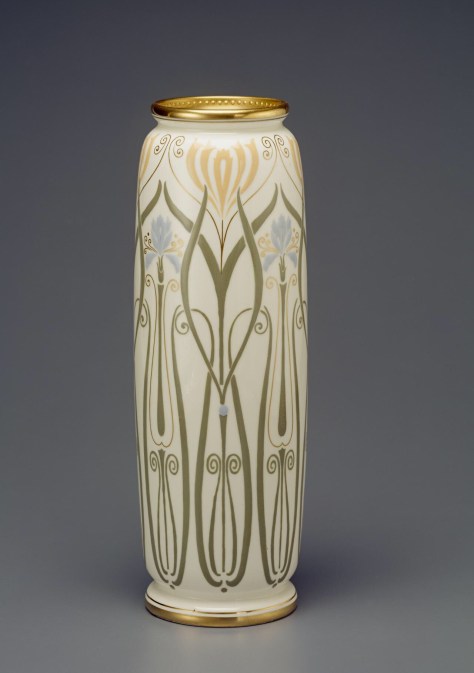
A beautiful Lactolian vase we saw recently at the National Gallery of Melbourne with members of the DCC.
This particular ware uses the same Parian body that John Slater (the original art directed at Burslem) had developed for Noke’s Vellum wares.

An exhibition quality trumpet vase in Lactolian.
Interestingly Lambeth collectors will tell us that they had previously also perfected this technique and among several key artists was one Florence Barlow who used this method extensively in her work. Examples of Doulton’s Lambeth pâte-sur-pâte were shown at the 1878 Paris Exhibition.
The production run of Lactolian ware was brief and thus today it is fiercely sought by collectors. The last piece I recall seeing was this vase at Bonhams in London a few years ago and it sold for a four figure sum despite its diminutive size.
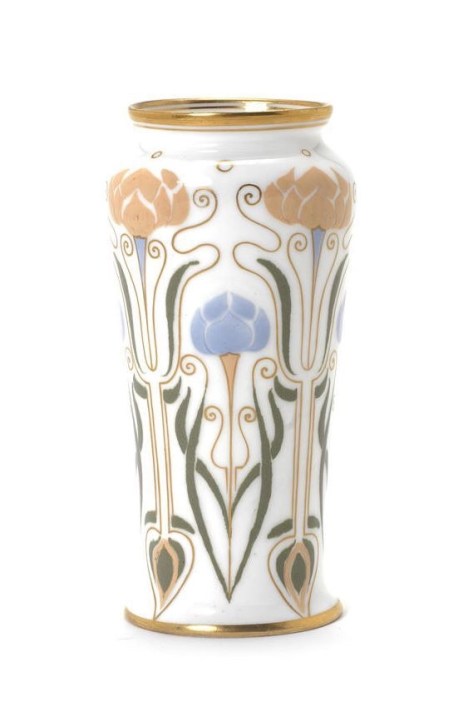
The incredibly short production run was due in no small part to the production cost. Desmond Eyles in Doulton Burslem Wares describes how one medium size vase could sometimes cost £100-£200 and could take nearly a month to complete.
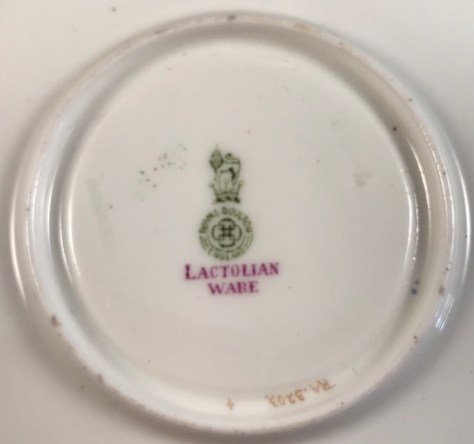
The base of a saucer with the Lactolian name, although that was not always used on every item produced.
Among the small group of artists linked to this ware other than Slater himself, was perhaps naturally Robert Allen who no doubt was responsible for the designs used. It will be of no surprise to also see the name William Skinner, master gilder at Burslem at this time.

A delicate cup and saucer in the Lactolian technique dating to 1902 and carrying an RA number too, telling us today that it came from the studio of Robert Allen.

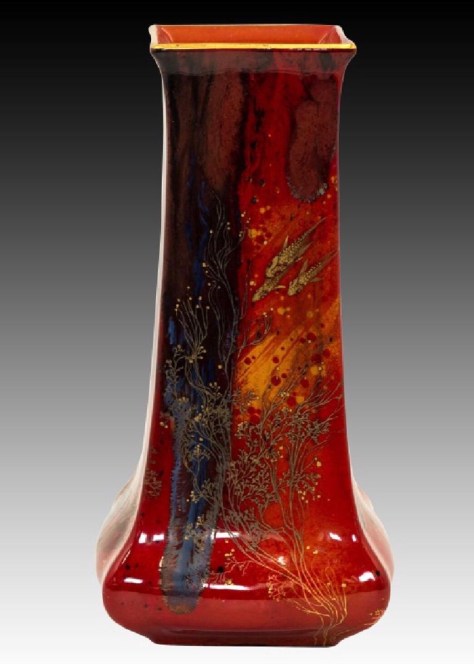
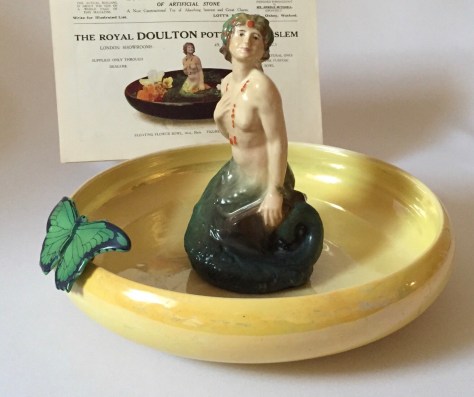
 1920s lustre vase with seascape.
1920s lustre vase with seascape.
